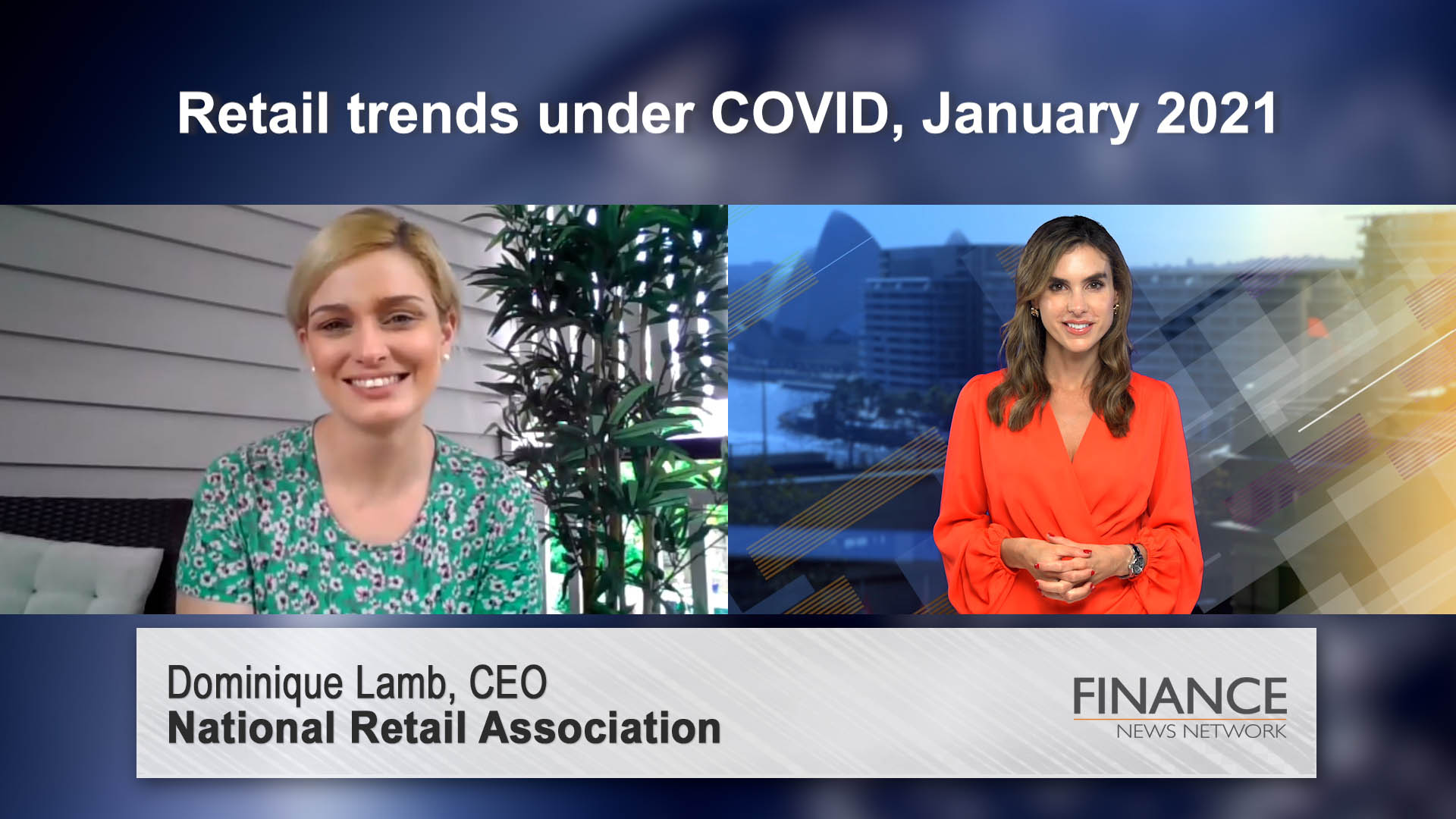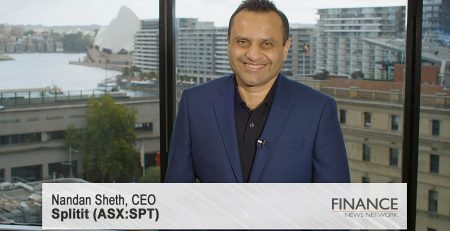Retail trends under COVID, January 2021
National Retail Association CEO Dominique Lamb discusses retail performance over the Christmas period, trends in retail, and strategies for encouraging consumer spending.
Anna Napoli: Hello. Anna Napoli for the Finance News Network. Joining me today is Dominique Lamb, award-winning lawyer, director of NRA Legal and CEO of the National Retail Association. Dominique, lovely to have you on the network.
Dominique Lamb: Thanks for having me.
Anna Napoli: Retail trade rose 7.1 per cent to record highs in November, to be up 13.3 per cent on the year. How did the sector perform during the Christmas holiday period?
Dominique Lamb: Christmas this year was absolutely stellar for our retailers. I think that people were very keen to get out and about and were certainly shopping up a storm. We know that foot traffic numbers were up across the country, and predictions at this point were that Australians have spent $52.3 billion from that middle of November to that Christmas Eve period, and then more again on Boxing Day. And so far, from what we're hearing from our members and shops across the country, is that people have definitely been spending and the crowds have certainly been there.
Anna Napoli: And do you expect this strength in retail trade to continue?
Dominique Lamb: Look, I think it's difficult to tell. It's going to come down to economic stimulus. There's a lot of economic stimulus still in our economy. JobKeeper will end in March, and of course, JobSeeker will be reduced. And, at that time, I suspect that our retailers, especially in those discretionary categories, are likely to see a downturn in what would be spent. And, of course, it is a quiet time of year for our retailers. That's why they're so dependent upon Christmas being strong — because ultimately, at the beginning of the year, it does drop off. And of course, with Chinese New Year, which is another peak for us, it's unlikely we're going to see higher figures then as well, because of course, our international travellers won't be coming into the country.
Anna Napoli: So, going forward, you mentioned the JobKeeper, and that looks to be ending in March. What are the main challenges that retailers are facing due to COVID-19 and the ongoing pandemic?
Dominique Lamb: I think there's a lot of uncertainty, both for consumers and businesses at this time. While we see lockdowns happening periodically throughout the country, it's hard to tell when something like that will occur. So, that's certainly one struggle, is not knowing when potentially you could be closed or not closed, so planning for stock levels and things like that.
Obviously, having our domestic borders opening and closing is also a problem, because retail is heavily tied to tourism. And also those international borders, as I said before, is very important for our retail because, of course, where people are on holidays, they typically spend more, and where we don't have domestic people travelling, normally we would have international travellers here, and so that is quite difficult for our retailers.
But also, more than anything, if you are a small business, there is an increase in digital. If you don't have a digital presence, particularly with lockdowns happening across the country, that can also be quite a struggle, but for many of our national brands, having a multi-channel has been something that has saved them throughout this period.
Anna Napoli: And you mentioned the lockdowns, and of course, the states seem to have quite differing approaches to lockdown in Australia. How are these approaches affecting retail trade in the various states and territories?
Dominique Lamb: It really is dependent upon how much communication comes out during and prior to going into lockdown, because, operationally, it's not quite as simple as simply shutting the doors. A lot of the times, there have been essential service lists or essential retailing lists. And it's been about working out if your business qualifies or whether you're allowed to stay open.
And then also the next question is, is there sufficient foot traffic for you to continue trading? Is there enough people coming through a centre to justify you paying staff and servicing those consumers as they come through at reduced numbers?
So, I think that when we look at different states, obviously Victoria had the longest and the harshest lockdown, which was very difficult for many of our Victorian retailers. We have seen others in South Australia and in Queensland, but they've been for shorter periods. And whilst, I guess, retailers understand it is a health crisis, it is also an economic crisis for many of them. So, I think that having clear and full information obviously coming from those government departments about when you can trade, how you can trade, what's safe, what's not, but also making sure that when we are directing consumers about shopping or when they can go or what they can shop, qualifying exactly what that means is also very helpful because a lot of people will simply just go in and out of a centre for essentials, whilst most of the time other retailers are able to trade and they simply really struggle through that period.
Anna Napoli: And I guess moving to eCommerce is one way retailers, as you mentioned, have sort of combated the difficulties over this period. Do you expect this move to eCommerce to continue?
Dominique Lamb: Look, we know that Australians annually spend about 9.5 per cent online and that, over the next five years, it was predicted to go to about 15 per cent. During COVID, we have certainly seen it move into those double-digits. And we know that new demographics are shopping online, that younger generation and also that older generation. So, many of our retailers, they have been multichannel for some time, and it's been very much a focus of the industry to engage in that digital medium, but in terms of whether or not that's going to continue to grow, I think it certainly will, but not to the levels that we see in other places like the United States, for instance, where it makes up quite a large component of how many sales are in retail. We know that Australian consumers still love to touch and feel items. And certainly with the lockdowns, we've also just seen people wanting to get out and about again. Have the experience of shopping, not only touch and feeling things, but at Christmas, seeing Santa Claus and just having all the other entertainment factors that occur within a shopping centre.
Anna Napoli: In terms of moving towards eCommerce, how has the association assisted retailers with the trend?
Dominique Lamb: For a long period of time, we've shared a number of partnerships with people like the National Online Retail Association or the NORA Network, also people such as eBay for instance, and we've provided a number of digital training packages for many of our members. And a whole component or suite of trainings specifically targeted at small businesses to assist them in becoming up-to-date with just digital in general. How to put a drop pin on Google, for instance, how to get up a website, all of those really simple things that often large businesses take for granted, and they've been very, very popular. In fact, we've partnered with a number of universities across the country to make sure that all of that content was up-to-date because, of course, this area is always ever-evolving.
Anna Napoli: And we have seen also the rise of buy now, pay later during the pandemic. Do you expect this will continue, and has it helped those retail figures?
Dominique Lamb: Look, certainly buy now, pay later absolutely has helped those retail figures. We know that for many of our apparel brands that have adopted certain buy now, pay later providers, that their cart sizes have doubled. And in fact, their sales on their online platforms have gone up by a hundred per cent. So it's certainly something that we anticipate we will see more of. We know that certainly millennials take more towards the buy now, pay later, but slowly but surely, these platforms are also taking over from other demographics. We know simply with their technology and their apps and how easy they are to use, and even just their ability to track what you're purchasing and where you're purchasing and what other sales are coming from those particular brands that you as a consumer gravitates to, seems to be very much valued by our Australian consumer and certainly is helping our retailers continue through this period where potentially money is harder for people to come by and they are managing their finances differently.
Anna Napoli: And what do you suggest are areas of focus for business owners looking to regain consumer confidence and encourage foot traffic back into the stores?
Dominique Lamb: Look, I think for many of our bricks-and-mortar stores, it's going to be essential to have your safety components very visible. So, your hand sanitiser. Obviously, free masks if you can offer them to consumers where they don't have them. Making sure that you are doing those periodic cleaning and checks across the store when it comes to COVID. Having check-in points, information, all of those kinds of things. Consumers really want to see, I guess, safety in order to feel safe in those locations.
Additionally, it's really important for you to communicate with your consumer and just identify exactly what they're looking for at this time. So, maintaining all of your communications, whether you've got a loyalty program, trying to get them back into store, also looking at your supply chain, whether you're offering click and collect, whether you're offering free postage, also whether you're offering people to come in store to, as I said, pick things up, etc, and just looking at the different ways you can do that. So, if there is a situation where you're in lockdown, offering to still do that or become a dark store during that period has also seen benefit for many of our retailers, particularly in Victoria.
But, more often than not, it is just simply about maintaining communication and engagement with your consumer, and also looking at, I guess, the different demographics that shop in your store versus your online store. Because in a lot of cases, they're actually very, very different. So, really drilling down into that detail and learning who your customer is.
Anna Napoli: It's certainly a rapidly changing environment at the moment. Dominique Lamb, thank you so much for your time and insights.
Dominique Lamb: Thank you.
Ends
Copyright 2021 – Finance News Network
Source: Finance News Network











